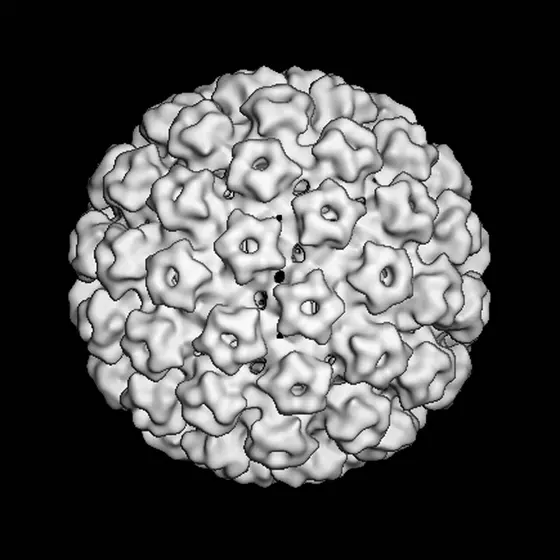Cervical cancer is the third most frequent cancer in women worldwide. It is caused by human papillomaviruses (HPV) that infect cells of the cervical mucosa and cause them to grow out of control. Infection with HPV can also cause anal cancer and cancers of the oral cavity. Preventive vaccines are available for preventing infection with the cancer-causing viruses. However, this HPV vaccination is ineffective in people who have already been exposed to the virus. In addition, vaccination rates are low. Despite existing vaccination recommendations – by now also for boys – by the Standing Committee on Vaccination (STIKO), only half of the girls aged 17 in Germany have been vaccinated.
“Our goal is to develop a therapeutic vaccine for treating individuals that have already contracted HPV infection and may already have developed HPV-induced cancer or precancerous lesions,“ said Angelika Riemer from the German Cancer Research Center (DKFZ). “A therapeutic vaccine stimulates the immune system and causes it to attack and kill infected or transformed cells.“
One of the major differences between preventive and therapeutic vaccines is the time of vaccination: A preventive vaccine is only effective if it is administered before an infection has taken place. By contrast, a therapeutic vaccine is used to treat already existing infections and their consequences.
Another difference between preventive and therapeutic vaccinations is apparent in the immune system's response. Following a preventive vaccination, the body develops antibodies that protect it from future infection with the pathogen. A therapeutic vaccination, however, activates cytotoxic T cells. These immune cells are capable of recognizing minute molecular structures of the papillomaviruses, called epitopes, which are displayed on the surface of infected cells or cancer cells, thus identifying them as suspicious, and eliminating these cells.
Riemer and her colleagues have already been able to show in mice that their experimental vaccine is effective against HPV-associated cancers. “The tumors regressed completely in half of the vaccinated animals,“ reported the DKFZ researcher.
The key component of the vaccine are the epitopes which HPV-associated tumors also exhibit on their surface. Following vaccination, these protein structures are carried into the lymph nodes. “This is particularly efficient in order to trigger an immune response because this is where all immune cells responsible for an immune response are present,“ said Riemer.
In this case, the cytotoxic T cells are crucial. When they come into contact with the epitopes from the vaccine, this is a signal for them to start searching the rest of the body for cells which also display these recognition molecules. If the cytotoxic T cells encounter cancer cells carrying these HPV epitopes on their surface, they destroy them.
The therapeutic vaccine against cervical cancer and other HPV-associated cancer types is currently still in the preclinical development stage. A couple of hurdles must be overcome before it will be possible to use it in humans. “The effectiveness of the vaccination must be increased,“ said Riemer.
Experience from the development of therapeutic vaccines against other cancers has shown that a vaccine is in some cases more effective if it contains more than one recognition molecule. “However, in our first experiment in mice it was the opposite,“ Riemer reports. “Maybe for HPV tumors it is better to use only one recognition molecule which is a really good one. But we need further investigations to verify this.“
Sebastian Kruse, Marleen Büchler, Philipp Uhl, Max Sauter, Philipp Scherer, Tammy C.T. Lan, Samantha Zottnick, Alexandra Klevenz, Ruwen Yang, Frank Rösl, Walter Mier & Angelika B. Riemer: Therapeutic vaccination using minimal HPV16 epitopes in a novel MHC-humanized murine HPV tumor model
OncoImmunology 8:1, e1524694, DOI:10.1080/2162402X.2018.1524694
